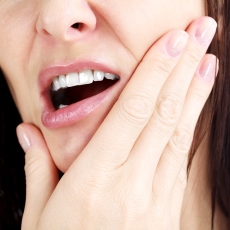Temporomandibular Joint Dysfunction

Learn More
See, Play and Learn
- No links available
Research
Resources
- No links available
For You
Summary
The temporomandibular joint (TMJ) connects your jaw to the side of your head. When it works well, it enables you to talk, chew, and yawn. For people with TMJ dysfunction, problems with the joint and muscles around it may cause
- Pain that travels through the face, jaw, or neck
- Stiff jaw muscles
- Limited movement or locking of the jaw
- Painful clicking or popping in the jaw
- A change in the way the upper and lower teeth fit together
Jaw pain may go away with little or no treatment. Treatment may include simple things you can do yourself, such as eating soft foods or applying ice packs. It may also include pain medicines or devices to insert in your mouth. In very rare cases, you might need surgery.
NIH: National Institute of Dental and Craniofacial Research
Diagnosis and Tests
- Panoramic Dental X-Ray (American College of Radiology, Radiological Society of North America) Also in Spanish
- Tooth Problems (American Academy of Family Physicians) Also in Spanish
Treatments and Therapies
-
Less Is Often Best in Treating TMJ Disorders
 (National Institute of Dental and Craniofacial Research)
Also in Spanish
(National Institute of Dental and Craniofacial Research)
Also in Spanish
Related Issues
- Orofacial Pain (Academy of General Dentistry)
- TMJ - Another Cause of Headache and Facial Pain (National Headache Foundation) Also in Spanish
Clinical Trials
-
ClinicalTrials.gov: Temporomandibular Joint Disorders
 (National Institutes of Health)
(National Institutes of Health)
Journal Articles References and abstracts from MEDLINE/PubMed (National Library of Medicine)
Teenagers
- TMJ Disorders (Nemours Foundation) Also in Spanish
Patient Handouts
- TMJ disorders (Medical Encyclopedia) Also in Spanish
-
TMJ Disorders
 (National Institute of Dental and Craniofacial Research)
Also in Spanish
(National Institute of Dental and Craniofacial Research)
Also in Spanish
